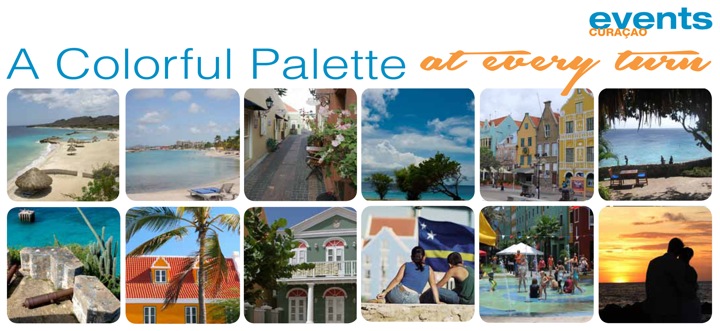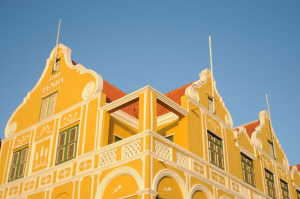 While it boasts brightly colored buildings on postcards, what the island of Curaçao conceals are tales of looting, pillaging and conquests. The island’s roots stem back to its original inhabitants, the Arawak Indians. These indigenous peoples left their trace, literally, in around the island where caves, artifacts, human graves and rock paintings can still be seen. The name of the island itself remains a mystery: it is said to stem from one of the Arawak tribes.
While it boasts brightly colored buildings on postcards, what the island of Curaçao conceals are tales of looting, pillaging and conquests. The island’s roots stem back to its original inhabitants, the Arawak Indians. These indigenous peoples left their trace, literally, in around the island where caves, artifacts, human graves and rock paintings can still be seen. The name of the island itself remains a mystery: it is said to stem from one of the Arawak tribes.
In 1499, the first Europeans touched ground on Curaçao. The Spanish seized the island that year in search of gold. Since nothing was found, the Indians were shipped to other local islands as slaves and the group of islands were named “islas inutilas” (useless islands). Some say that the “Caiquetios,” the first colonists, gave the island its name.
The Dutch then took possession of Curaçao in 1634. Willemstad, the capital, became a fortified port town with the construction of Punda. Inner districts of the city named Otrobanda, Pietermaai and Scharloo Otrabanda, were formed in later centuries and today represent the inner city of the capital, which was designated a World Heritage City by UNESCO in 1997.
Agriculture was the principal interest of the Dutch in the island, but soon the slave trade took hold and the island served as a slave depot for the region, with half the slaves destined for the Caribbean going through Curaçao. The local language Papiamentu, a mixture of Portuguese, Spanish, Dutch, and African dialects began to develop and it soon became the primary source of communication between slaves and their owners.
The main products on the island were oranges and aloe for subsistence, and mostly salt. Along with the end of slavery came an economic decline in the region in the 19th century. Missionaries who arrived on the island in that period set up villages and churches to cater to inhabitants. Priests were involved in the actual building of these villages. These structures often were not more than shelters. Sint Willibrord village was among the first parishes to be founded by the Roman Catholic mission. The church was renovated with the support of the Curaçao Monuments Foundation in 1999. Curaçao also boasts the oldest standing Synagogue and Jewish cemetery in the Western Hemisphere, as Jews came from the Netherlands, Europe and Asia before 1700, yet a further testament to the diversity that has built Curaçao.
The main products on the island were oranges and aloe for subsistence, and mostly salt. Along with the end of slavery came an economic decline in the region in the 19th century. Missionaries who arrived on the island in that period set up villages and churches to cater to inhabitants. Priests were involved in the actual building of these villages. These structures often were not more than shelters. Sint Willibrord village was among the first parishes to be founded by the Roman Catholic mission. The church was renovated with the support of the Curaçao Monuments Foundation in 1999. Curaçao also boasts the oldest standing Synagogue and Jewish cemetery in the Western Hemisphere, as Jews came from the Netherlands, Europe and Asia before 1700, yet a further testament to the diversity that has built Curaçao.
The island saw an industrial renaissance in the 20th century, beginning with the oil refinery of 1915 around Schottegat, built to process Venezuelan oil. This improved the economy of the region greatly. Employees lived in typical tropical dwelling compounds still seen today in Emmastad and Julianadorp. The refinery was closed by Shell in 1995 but reopened under government ownership years later. It still is the main employer on the island, with over 3,800 jobs created. Dutch architecture is still the predominant influence seen on the island stemming from that period.
Curaçao is an independent entity, stable thanks to its strong tourism, a stable ex pat community, and the political solidity. Its colorful history makes it a melting pot of cultures, languages and traditions.















No Comment